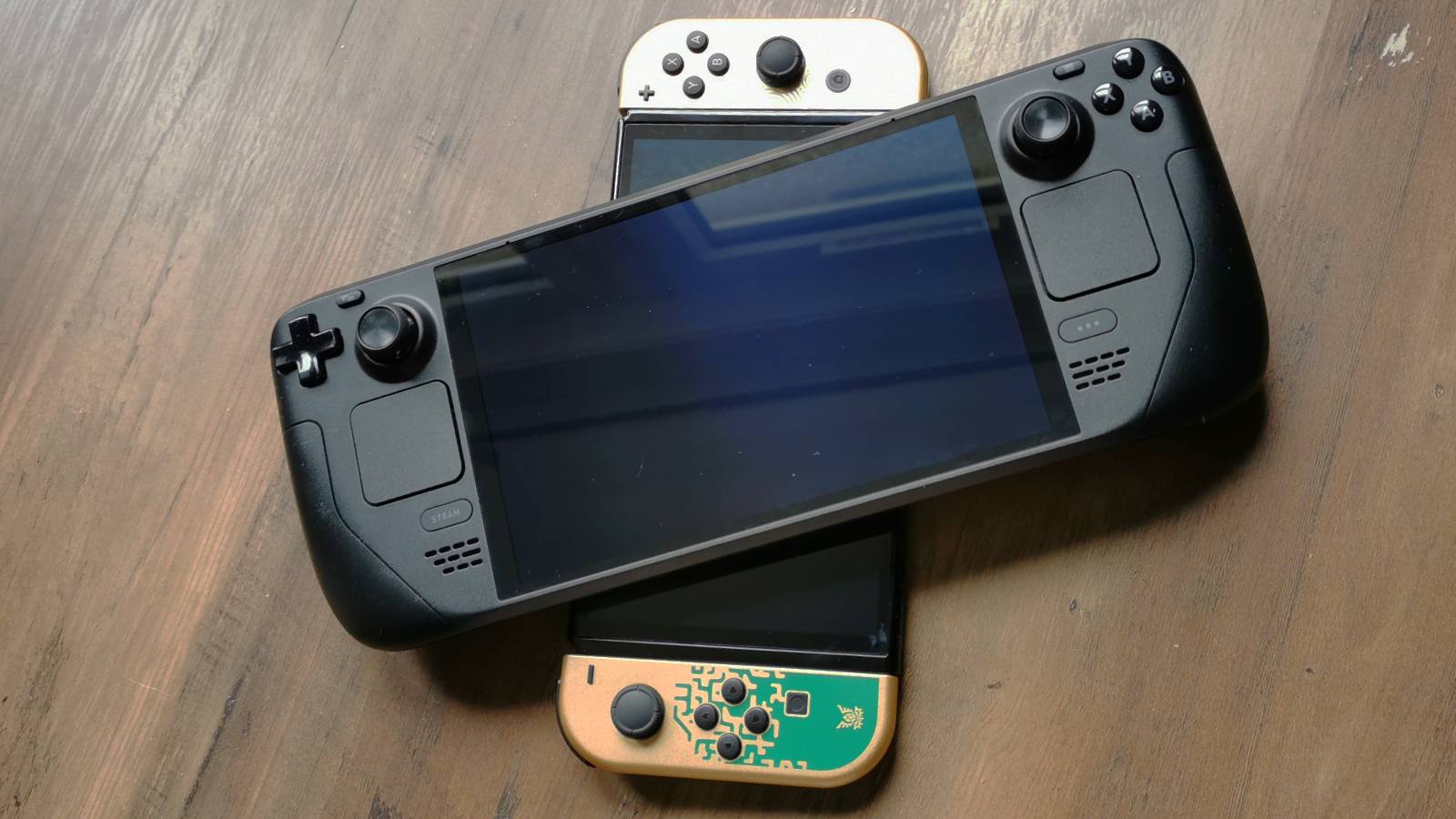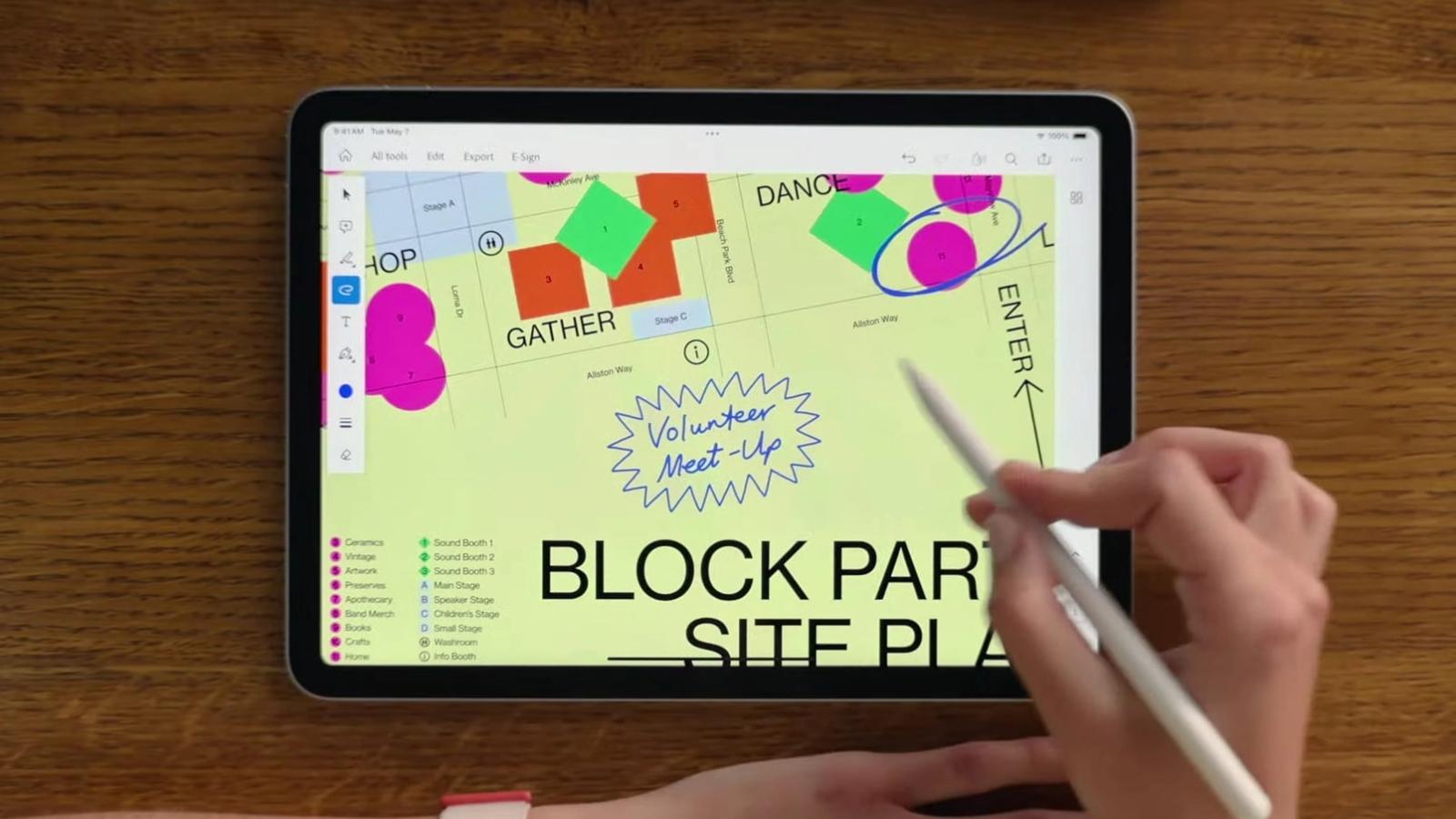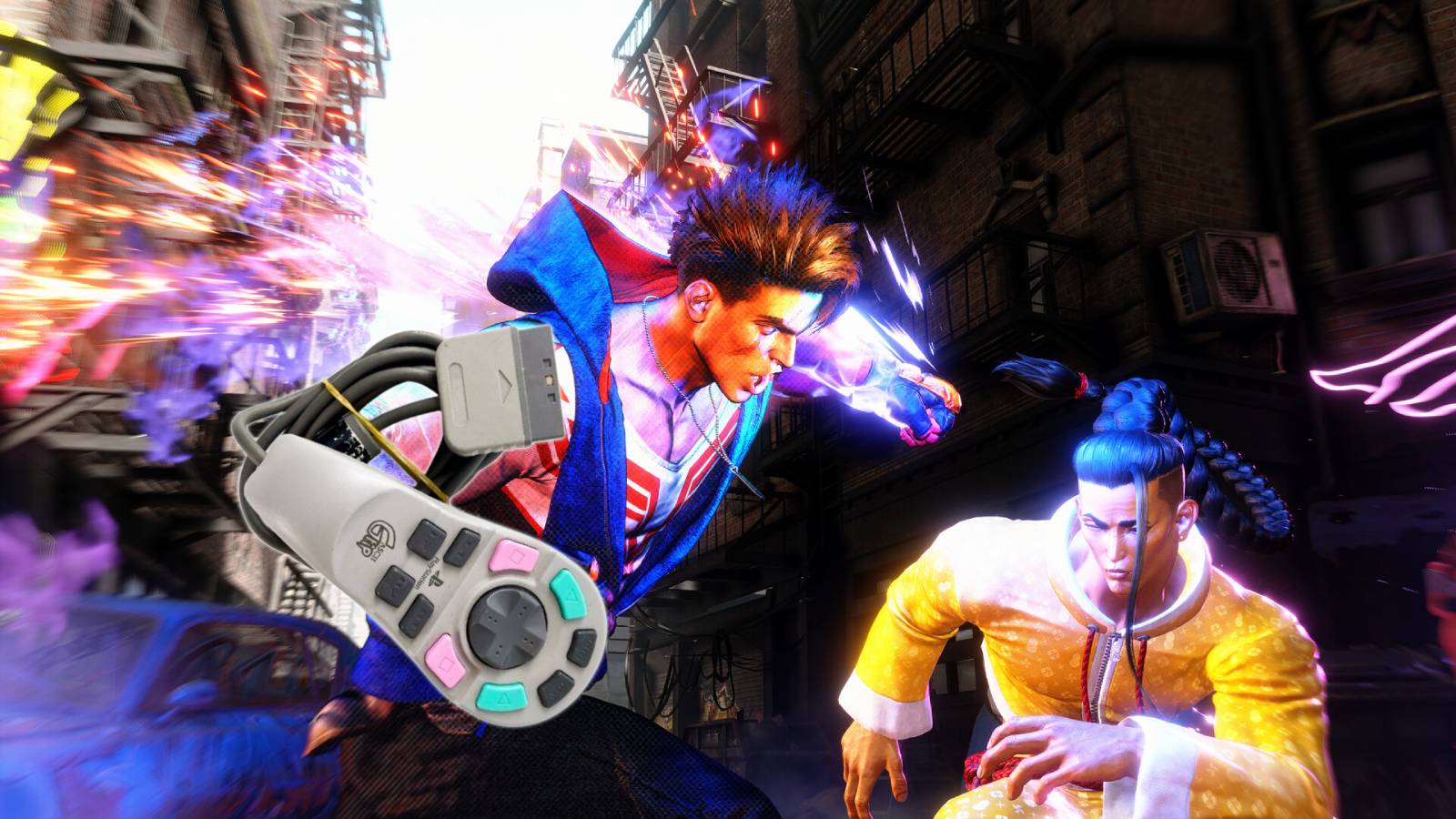Logitech G Pro X TKL Lightspeed review: Behind the curve
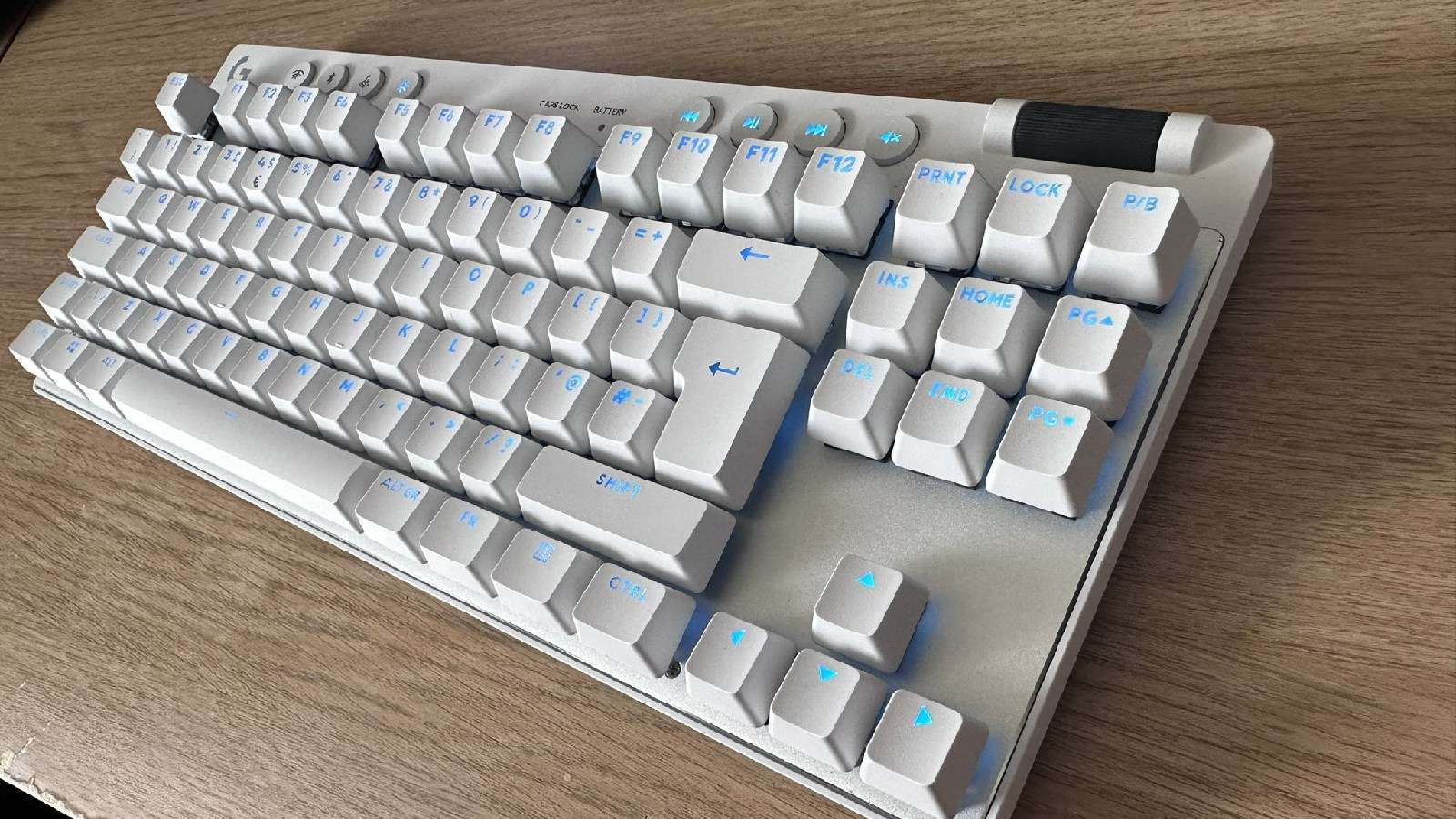 Dexerto
Dexerto Logitech’s G Pro X TKL Lightspeed is the latest esports gaming board from the company, but does it stand up to heated competition from rival brands in the keyboard segment? We investigate.
Logitech’s dominance in the esports industry is noteworthy, many pro players across a whole range of games use their products in the biggest esports arenas in the world. But, is the performance of each board actually worthwhile in a keyboard segment where competitors are starting to innovate at almost every level possible?
Logitech’s G Pro X TKL Lightspeed overhauls its older G Pro X keyboard with several new additions and updates. Firstly, the board now uses Logitech’s swanky Lightspeed wireless protocols, which allow for a wireless polling rate of up to 1000Hz, giving the board a 1ms response time. Secondly, you now get premium double-shot PBT keycaps. Finally, as its name might imply, you have an additional volume rocker and an all-new design, equipped with media keys, in a TKL format.
While other shapes such as 75% exist in the ROG Azoth, Blackwidow V4 75%, and other competitors, Logitech has stuck to their guns. Is the end result worth it?
Key specs
- Switch type: GX Brown (reviewed), GX Red, GX Blue
- Keycaps: PBT
- Connectivity: Wired (USB-C), Bluetooth, 2.4GHz
- Form factor: TKL (80%)
- Lighting: North-facing RGB
- Features: Media roller, adjustable feet, media controls, 1ms response time, Lightspeed
- Battery life: Up to 50 hours
- Price: $179.99
Included in the box: USB-C to USB-A cable, USB-A to USB-C converter, Lightspeed wireless dongle, carry case
Design
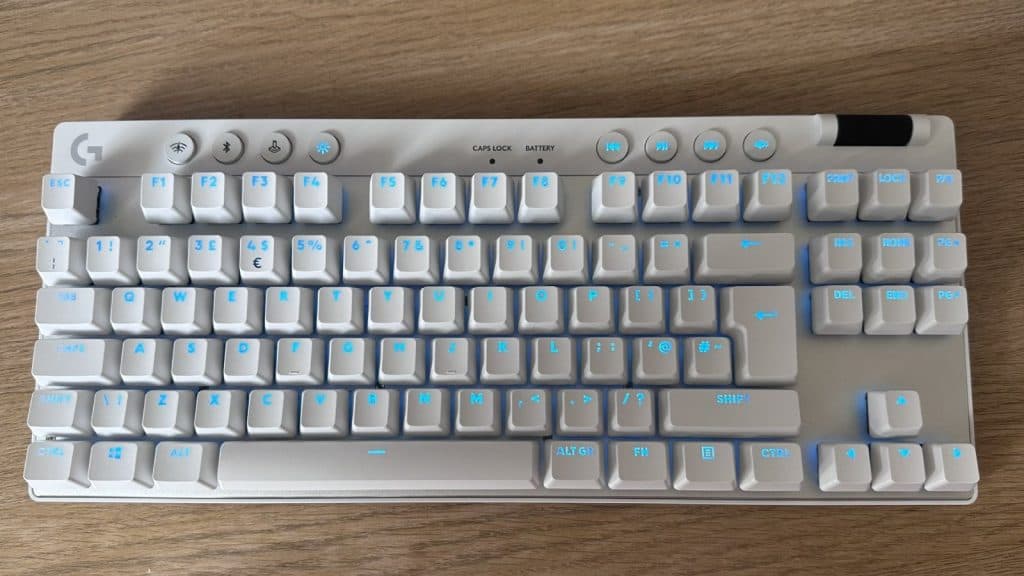 Dexerto
Dexerto The Logitech G Pro X Lightspeed feels like a board created to look great. It’s design and white keycaps look unbelievably clean, while its TKL layout might come across as slightly outmoded for those who might wish to play using smaller layouts like 75% or below. Generally, we find TKL to be just a small step down from a full-size, with the optimal shape for performance and portability at around 65%, as companies like Higround and Corsair have popularized.
That said, the Logitech G Pro X TKL Lightspeed also has PBT Keycaps and a USB-C charger. While these are welcome additions, they are very much at the minimum expectations we have for a $200 keyboard released in 2023.
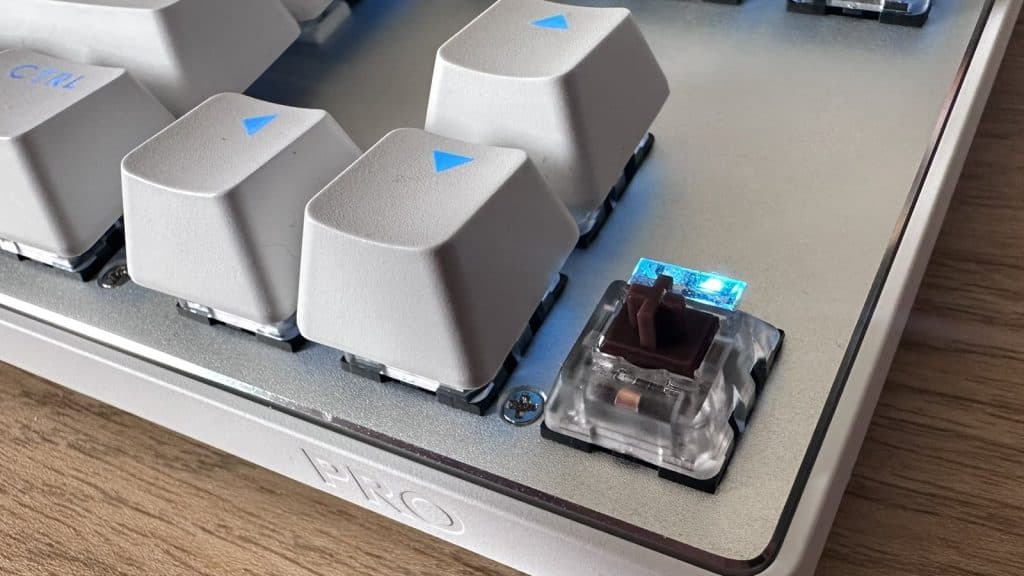 Dexerto
Dexerto Finally, you also have the addition of a non-hot-swappable PCB, which almost feels like a crime for a mechanical keyboard released this year. That means you’ll be stuck with whatever you choose when purchasing the board. So, you can choose from either GX Brown tactile, which we tested, GX Red linears, or GX Blue clicky switches. This is unbelievably disappointing, as soldered switches are not easily moddable, and out of the box, there is no pre-applied switch lube for smooth operation, meaning that you end up with a relatively scratchy typing experience when compared to contemporaries.
The same applies to the board’s stabilizers, which remain stock, with no additional lube applied for smooth actuation or operation. Lastly, the board also has no sound-dampening features housed within, resulting in a fairly loud typing experience.
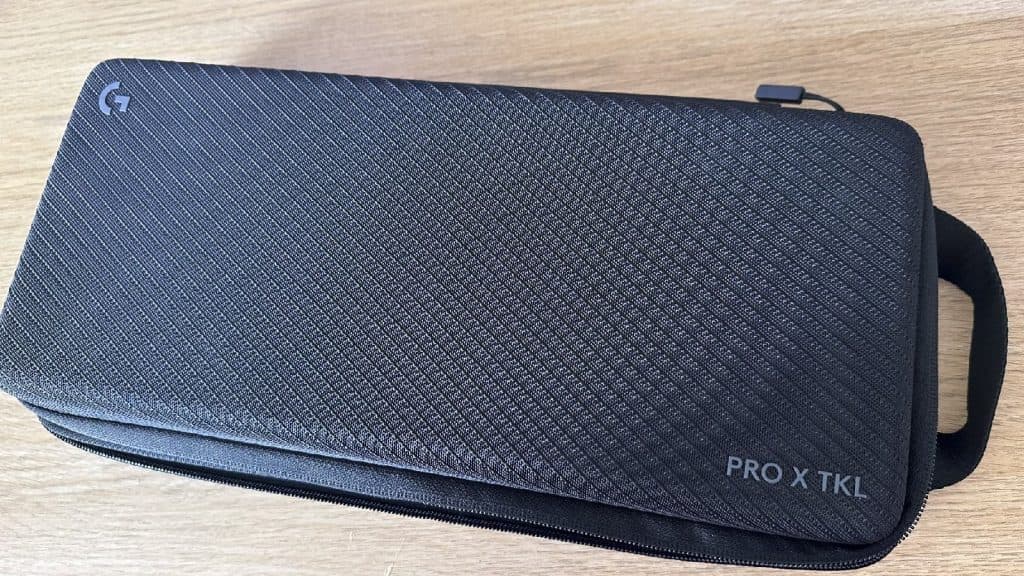 Dexerto
Dexerto Finally, also included is a lovely carrying case, making it excellent for taking out and about with you to LANs or tournaments. The included Lightspeed dongle also allows you to hook up multiple peripherals at once, such as the G Pro X 2 Superlight, which also releases alongside the board.
With this in mind, and for the asking price that Logitech is offering for the keyboard, we don’t believe that the keyboard really delivers on its esports-ready promises, with innovative companies like Wooting pioneering the “Rapid Trigger” feature, which has since been replicated by brands like Razer, SteelSeries, and Corsair.
Even when it comes to a traditional mechanical keyboard, companies like Razer and Asus are just ahead of the curve in almost every way, offering enthusiast-level customizations out of the box, resulting in a much superior typing experience than what Logitech can muster.
Software & features
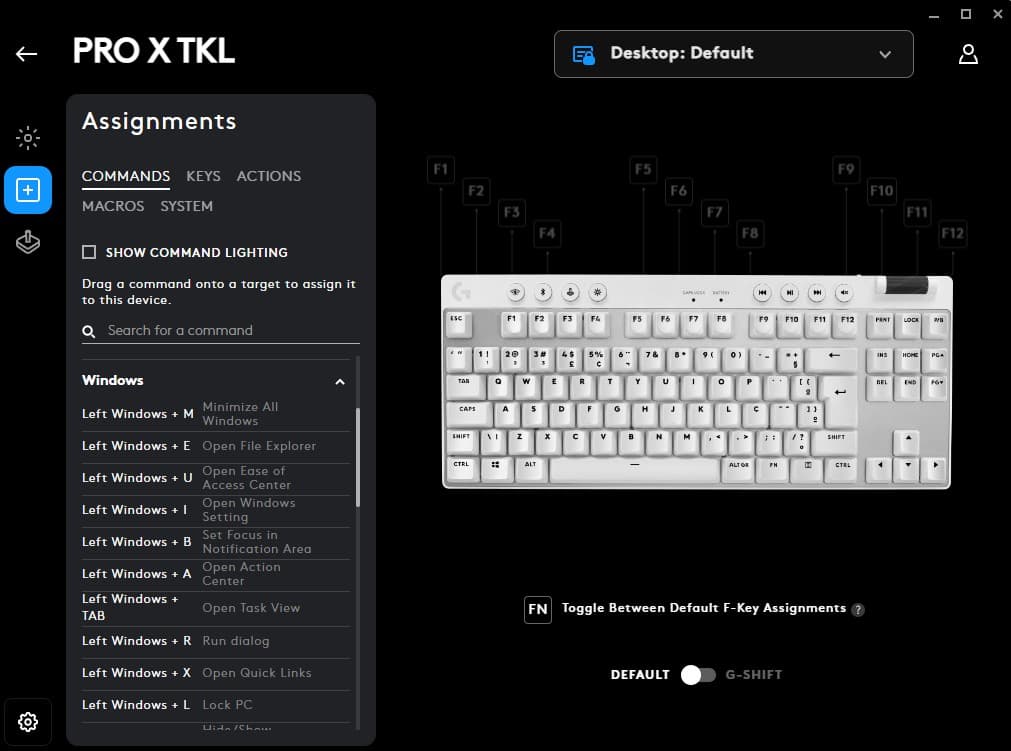 Dexerto
Dexerto You can control various settings via Logitech G Hub, which allows to to switch up the RGB glow on the board at the click of a button. It’s one of the most accomplished and easy-to-understand UI, letting you quickly configure the board, without getting lost in a labyrinth of settings.
You can easily activate game mode, which will switch off unnecessary keys, switch up lighting effects, and change up the functions of the F-Row, which is incredibly welcome.
It’s one of the things that Logitech really does best, and it’s great to see the G Pro X TKL Lightspeed keyboard come to the forefront here.
The media roller here is a nice touch, offering a free spin to control volume. At this point, it is something that we want to see on almost every commercial gaming keyboard over the 65% layout, as it just adds so much utility to the device.
Performance
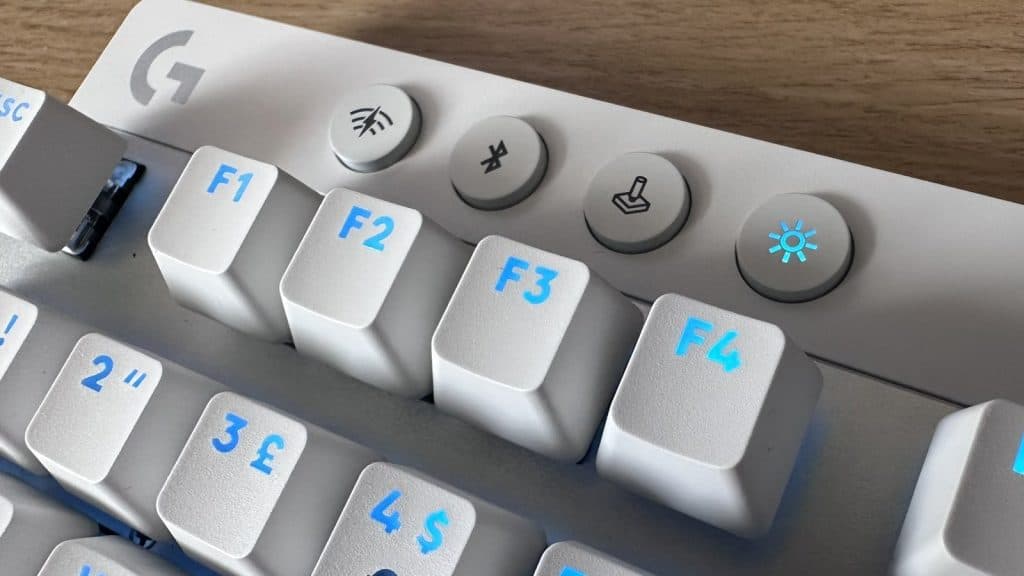 Dexerto
Dexerto The Logitech G Pro X TKL Lightspeed offers excellent wireless connectivity, thanks to its 1000Hz polling rate, allowing for a 1ms response time. Secondly, you can also hook this keyboard up via Bluetooth, allowing for device switching between multiple setups, which may come as a boon for those who might have more than one setup at their desk for streaming.
The board itself, in its tactile configuration, is good for typing and office workloads. However, you may have much more success in competitive tiles using linear switches, which allow for smoother movement when playing titles like Counter-Strike, or Valorant.
We tested the keyboard in its wireless configuration while gaming and could detect no input lag, making Logitech’s tournament-grade claims hold water. It’s just a shame that the company has not chosen to pack in any premium trimmings as we see in the Blackwidow V4 75%, or Asus ROG Azoth boards which were released earlier this year.
This will not feel too different from other “stock” mechanical keyboards you can find, and since it will be difficult to mod, you will not be able to change up its performance easily. So, while the board will perform in games just fine, it’s far from the apex of what gaming keyboards can offer in 2023. Given its $200 price tag, we expected a little bit more.
Battery life
The Logitech G Pro X TKL offers an impressive 50-hour battery life with RGB on via its 2.4Ghz Lightspeed connection and given the amount of power going into ensuring stable polling, as well as all the RGB goodies, this is a good number to hit. We verified these claims and got above 50 hours of life throughout the duration of our testing.
Should you buy it?
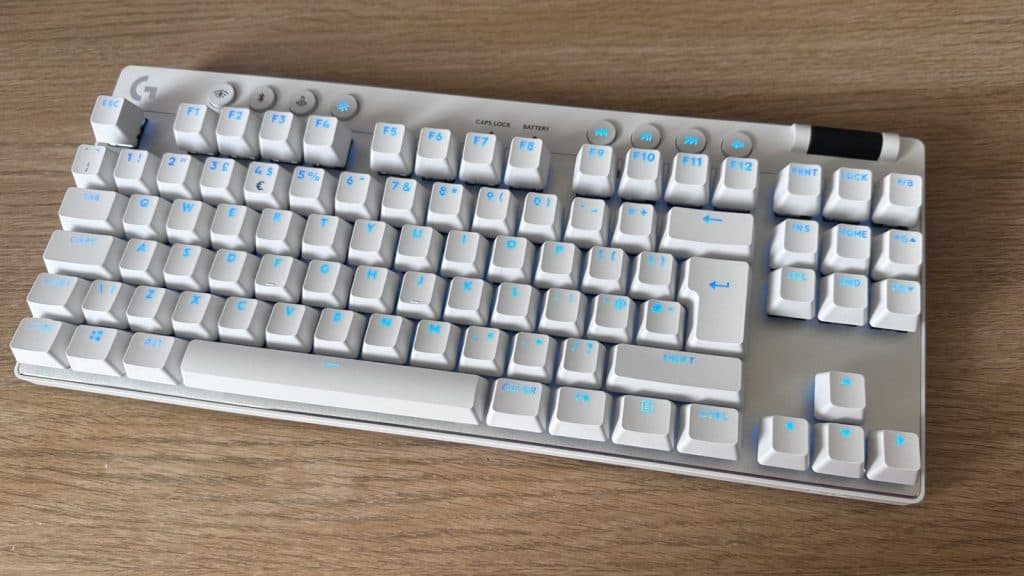 Dexerto
Dexerto The $200 keyboard segment is heating up, and with options like the Blackwidow V4 75% in the market, in addition to the ROG Azoth, which can commonly be found discounted at the same price. We think that the Azoth has Logitech beat in every single way possible. If you just want that Lightspeed connectivity, or wish to stay in the Logitech ecosystem, then the G Pro X TKL Lightspeed won’t let you down, but don’t expect an experience on the level of the best gaming keyboards out there right now.
The Verdict: 3/5
Logitech has simply been outpaced by its competitors here, plain and simple. The G Pro X TKL Lightspeed offers zero additional customization options aside from its keycaps, and the typing experience, as a result, is sub-par when compared to other commercially available options like the ROG Strix Scope II wireless, which is also $10 cheaper.
It’s still a good keyboard, but it’s just not up there with the best. We hope to see Logitech revise and improve on this board in the future, as other companies have been doing so throughout 2023 in order to deliver a typing experience on the same level as what you can expect from rival brands.
If you click on a product link on this page we may earn a small affiliate commission.
